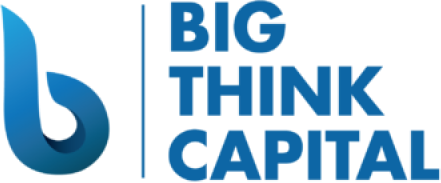Navigating the Changing Landscape of SBA Loans and Business Credit Management
Estimated Reading Time: 5 minutes
- Understanding the benefits and types of SBA loans.
- How rising interest rates affect small business borrowing.
- Effective strategies for managing business credit in 2025.
- Tools for better financial management.
- Preparing for future funding needs.
Table of Contents
- Understanding SBA Loans
- The Impact of Rising Interest Rates on SBA Loans
- Effective Business Credit Management in 2025
- Tools and Resources for Better Financial Management
- Planning for Future Funding Needs
- Why Choose Big Think Capital
- Conclusion
- FAQ
Understanding SBA Loans
SBA loans are federally guaranteed loans designed to assist small businesses in obtaining funding that might otherwise be inaccessible. The U.S. Small Business Administration (SBA) offers several loan programs, including the popular 7(a) and 504 loan programs. Each option caters to different types of funding needs, whether for working capital, equipment purchase, or real estate investments.
Key Benefits of SBA Loans:
- Lower Interest Rates: Compared to conventional loans, SBA loans usually offer lower interest rates, making them more affordable for small businesses.
- Longer Repayment Terms: SBA loans come with longer repayment periods, which can ease the monthly financial burden.
- Access to Larger Amounts: They can provide up to $5 million in funding, enabling businesses to tackle larger projects or investments.
Rising interest rates, however, pose challenges for borrowers. As the Federal Reserve continues its efforts to curb inflation, rates have gradually increased, leading to considerations for businesses seeking SBA loans.
The Impact of Rising Interest Rates on SBA Loans
Interest rates have reached levels not seen in several years, fundamentally reshaping small business lending dynamics. The SBA’s recent data indicates that the average interest rate for a 7(a) loan now hovers around 8.5% to 9%, varying based on loan size, term length, and lender fees. Small businesses need to consider these changes as they explore financing options.
Factors impacting SBA loan applications in a high-interest environment include:
- Increased Monthly Payments: Higher interest rates result in elevated monthly payments, which can strain cash flow for businesses already operating on narrow margins.
- Application Scrutiny: Lenders may tighten their underwriting criteria amid rising interest rates, making it essential for borrowers to present strong financial profiles.
- Shift in Loan Types: Business owners may consider alternative funding solutions, such as merchant cash advances or lines of credit, to mitigate the effects of higher rates.
Effective Business Credit Management in 2025
In today’s climate, effective credit management is paramount. Here are practical strategies for small business owners looking to enhance their credit management approach:
- Regularly Monitor Your Credit Score: Keeping an eye on your business credit score allows you to identify areas for improvement. Use resources like Dun & Bradstreet’s Paydex Score or Experian’s Business Credit Score to evaluate financial health.
- Establish Business Tradelines: Building relationships with suppliers and vendors that report to credit bureaus helps construct a strong credit history. Always pay your bills on time to maximize positive reporting.
- Maintain Debt-to-Income Ratios: Strive for a healthy debt-to-income ratio by balancing existing debts with new financing. Ideally, your debt payments should not exceed 30% of your gross income.
Understanding and managing your business credit significantly influences your ability to secure financing when needed. In a high-interest environment, lenders look closely at creditworthiness before approving loans. Therefore, a solid credit profile can provide access to better rates and terms.
Tools and Resources for Better Financial Management
Using effective financial management tools can help improve operational efficiency and financial health. Here are a few that can assist small business owners:
- Accounting Software: Applications like QuickBooks or Xero provide insights into cash flow, expenses, and profitability, offering a real-time view of your financial status.
- Budgeting Tools: Utilize budgeting tools or templates that help forecast incoming revenue and expenses, facilitating better cash flow management.
- Business Financial Advisors: Consulting with experienced financial advisors can provide tailored strategies and insights to navigate your unique financial landscape.
These tools not only help in managing operational aspects but also prepare businesses for effective communication with lenders during the SBA loan application process.
Planning for Future Funding Needs
Anticipating future funding requirements is essential in today’s financial environment. Here are three practical takeaways on preparing for the funding landscape as we move through 2025:
- Evaluate Your Business Funding Strategy: Assess both short-term and long-term financial goals. Understand how much funding you may need to achieve these objectives and consider a diversely structured funding mix involving SBA loans, lines of credit, and alternative financing options.
- Develop Strong Financial Documentation: Keep your financial records, tax returns, and profit loss statements organized and updated. Presenting a comprehensive financial picture to lenders is crucial in building trust and credibility during the loan application process.
- Stay Informed on Economic Trends: Regularly follow financial news and trends that may impact interest rates and lending practices. Knowing when to apply and understanding market dynamics can make a significant difference in securing favorable loan terms.
Why Choose Big Think Capital
At Big Think Capital, we recognize the challenges that small businesses navigate while seeking financing solutions. Our experienced team is committed to aiding business owners in understanding their options, be it SBA loans or alternative lending methods. We prioritize connecting you with solutions tailored to your unique needs.
As high interest rates reshape the borrowing landscape, it is critical to finetune your funding strategies. Our advisors are equipped to guide you through the complexities of financing, helping you access capital to grow your business successfully.
Conclusion
Navigating the changing landscape of SBA loans and business credit management in 2025 is essential for small businesses seeking growth and sustainability. By implementing effective credit strategies, leveraging financial tools, and understanding the impact of rising interest rates on lending practices, business owners can position themselves for success in an increasingly competitive environment.
For more insights or personalized advice, we invite you to visit bigthinkcapital.com or speak directly with one of our funding experts today. Your path to financial empowerment starts here.
FAQ
What are the main types of SBA loans? The primary types include the 7(a) loan program and the 504 loan program, catering to various funding needs.
How do rising interest rates affect small businesses? Higher interest rates can lead to increased monthly payments and stricter lending criteria.
What tools can help manage small business finances? Tools like accounting software, budgeting tools, and financial advisors can significantly aid business financial management.






